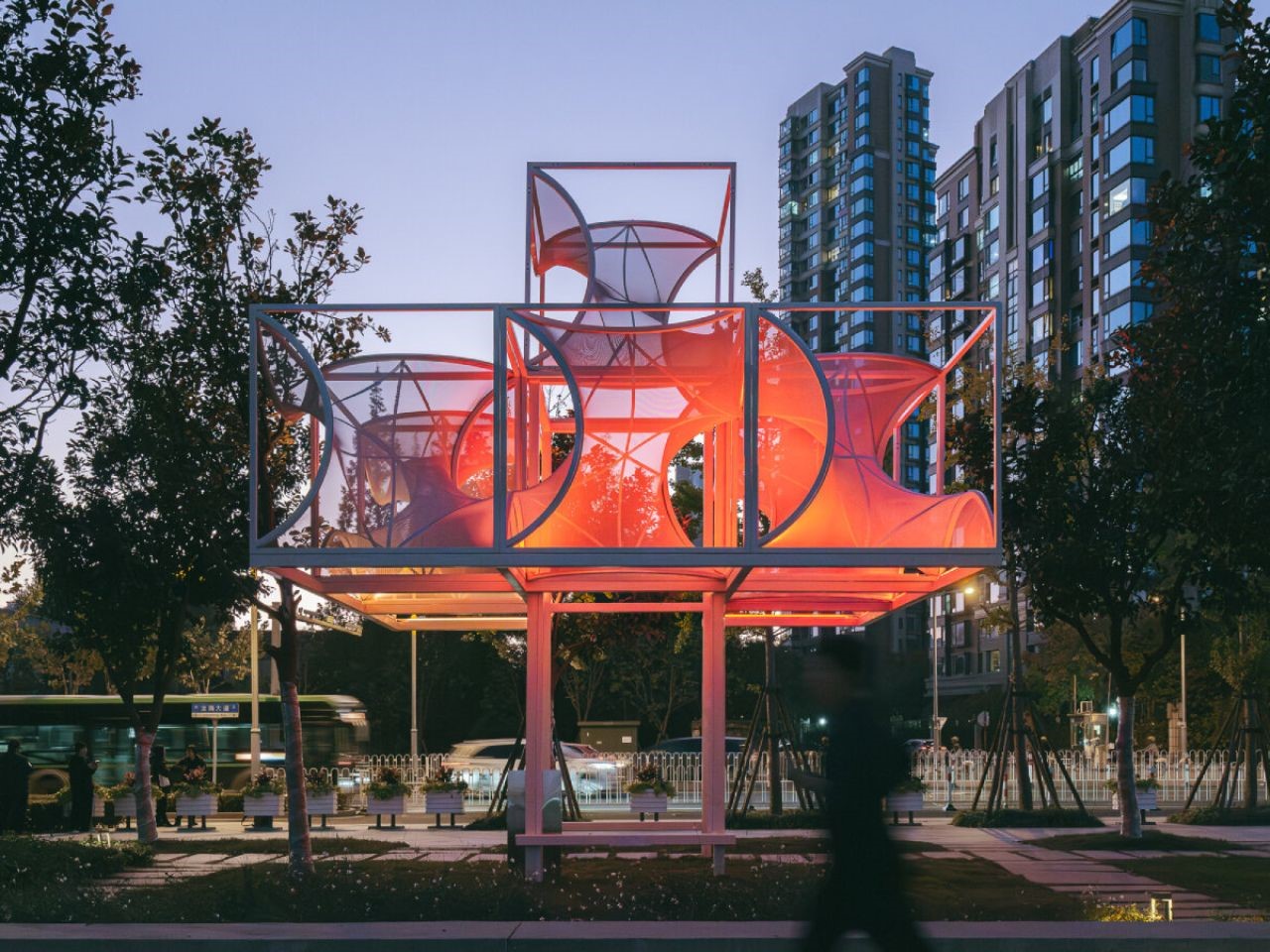
Imagine walking along Shanghai’s bustling Huangpu River, where the city’s steel-and-glass skyline meets the soft ripple of the water. Suddenly, an otherworldly structure catches your eye, a delicate yet bold fusion of billowing curves and sharp angles, shifting hues as the daylight fades. This is Curly Cube, a stunning modular installation by the People’s Architecture Office (PAO), designed to transform an ordinary urban space into a playground of light, shade, and interaction.
Designer: People’s Architecture Office (PAO)
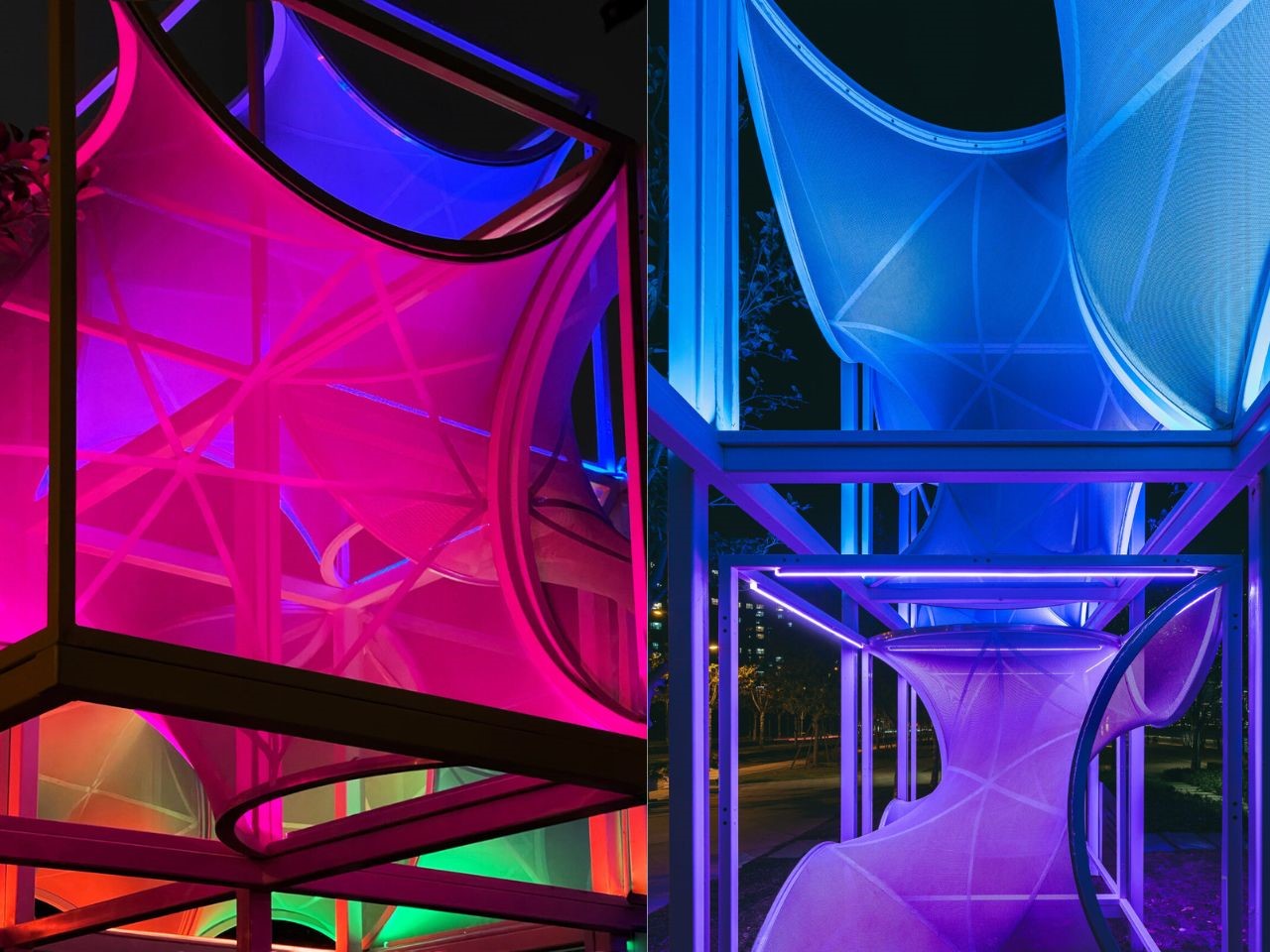
At first glance, Curly Cube is a contradiction, soft yet structured, fluid yet rigid. Its design is inspired by the Gyroid minimal surface, a mesmerizing natural form that exists at the intersection of mathematics and nature. This complex yet efficient geometry is brought to life through curvilinear tensile membranes, conceived by Serge Ferrari, stretched over lightweight square frames. The result is a structure that feels both futuristic and strangely familiar, like something nature might have designed if given an architect’s toolkit.
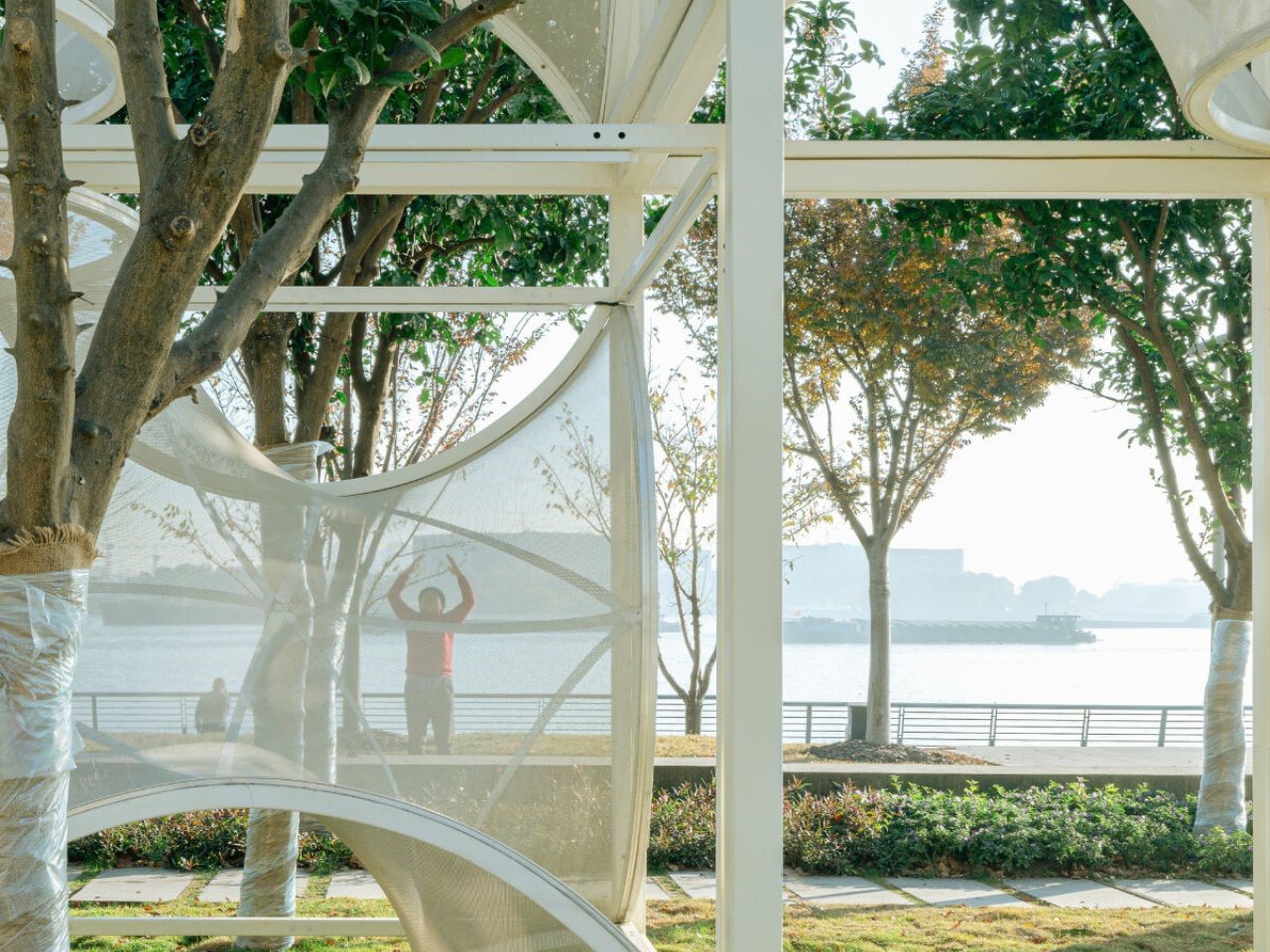
This duality of tensile softness and geometric precision is what makes the installation so compelling. Tensile structures, known for their ability to cover vast spans with minimal material, use fabric or membranes stretched across a supporting frame, creating lightweight yet sturdy enclosures. The principles of tensegrity (a balance between tension and compression) further enhance the structure’s strength and adaptability. The Curly Cube is a sculpture but also a living, breathing form that interacts with its environment.
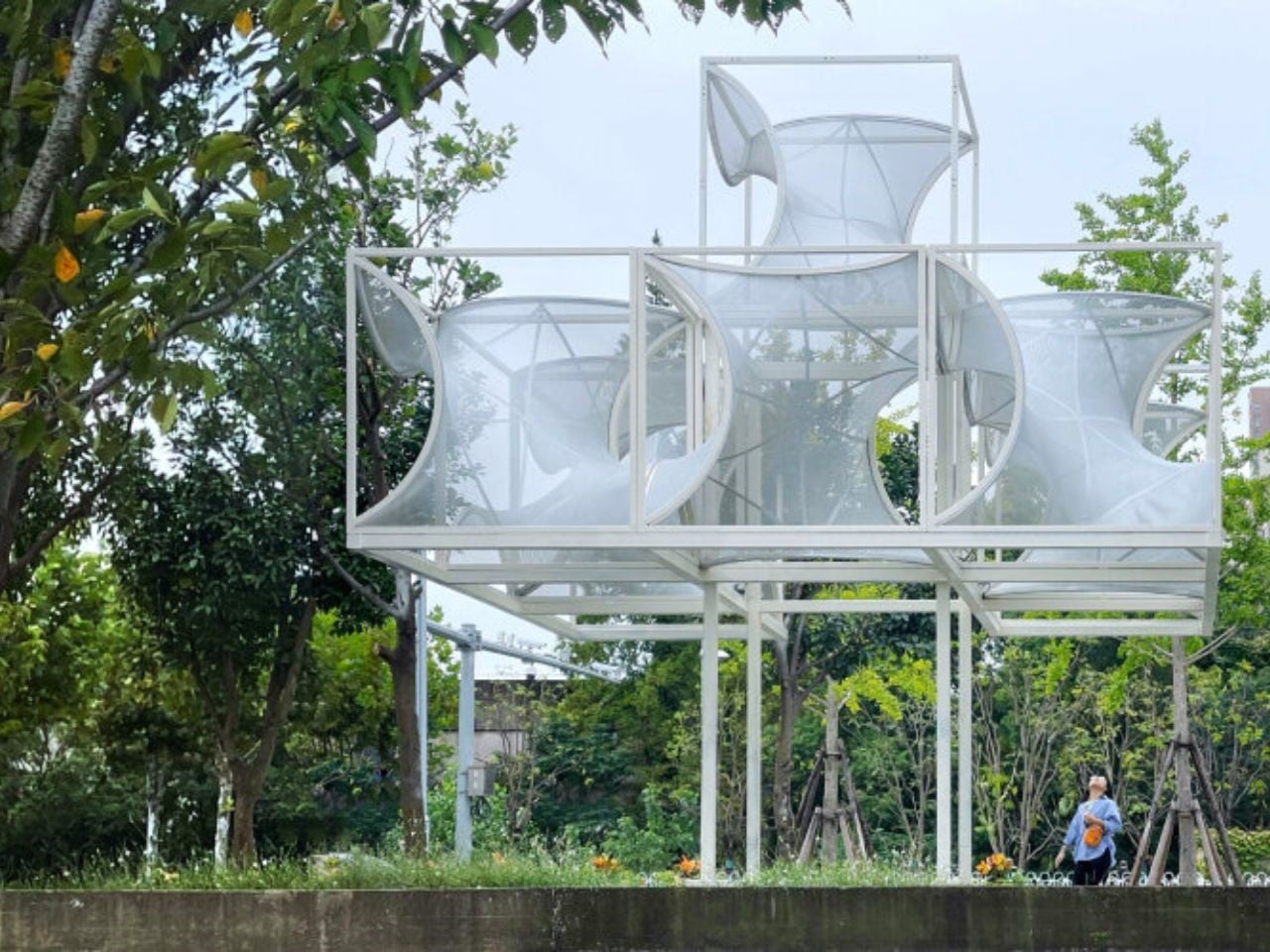
By day, Curly Cube offers shaded pockets where visitors can pause, relax, or simply escape the sun. The translucent membranes filter light in soft, diffused waves, creating an inviting sanctuary within the city’s vibrant chaos. It’s a place where people can sit, lean, or even climb, a modular space that encourages intuitive exploration.
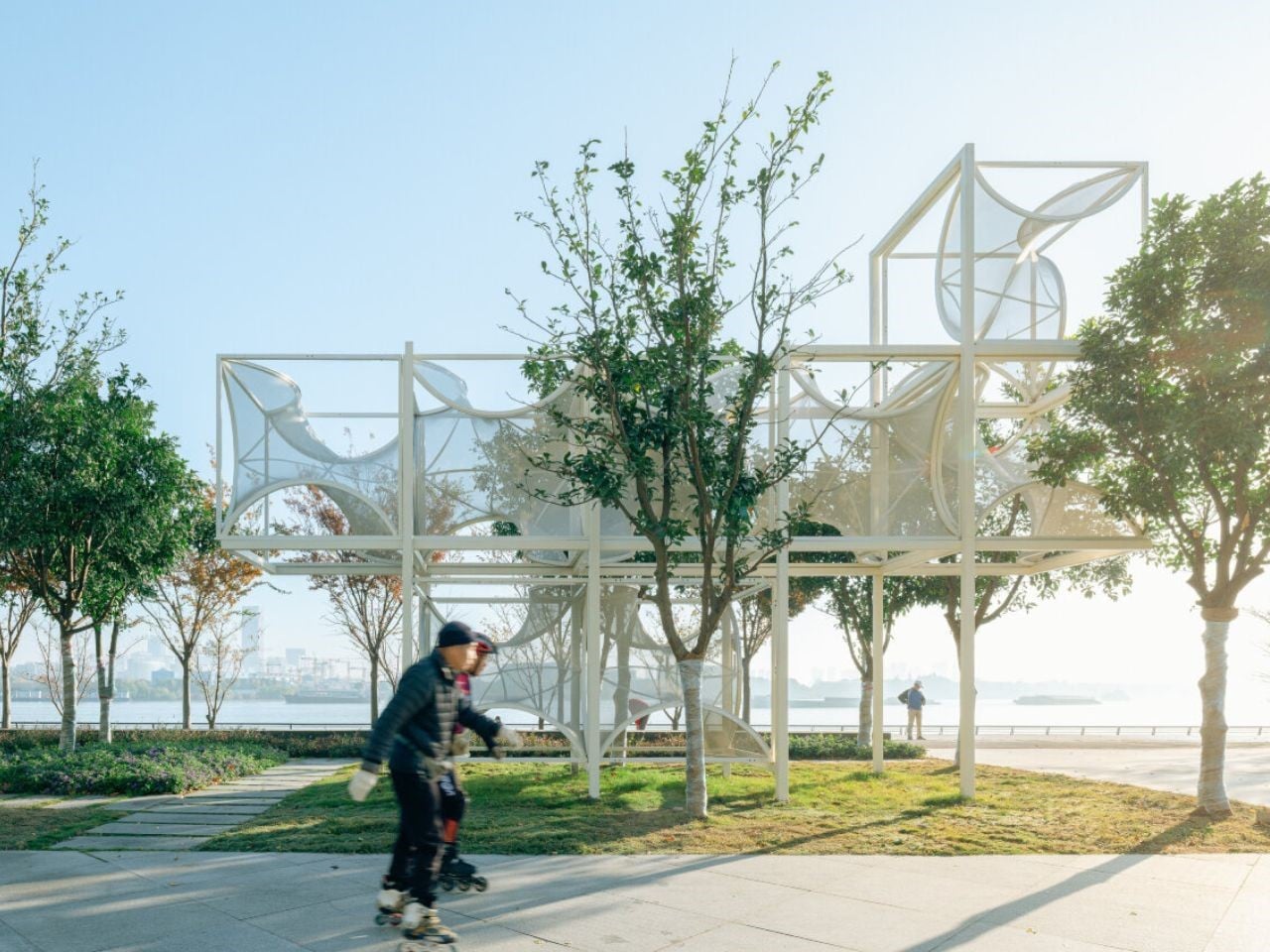
But as the sun dips below the skyline, the real magic begins. Integrated lighting casts gentle, fleeting gradients across the silver membranes, shifting as you move around them. The structure glows like a futuristic lantern, drawing in visitors who might have otherwise walked by. The lighting isn’t just for spectacle, it transforms the space into a new kind of social hub, inviting people to gather, play, and linger in an atmosphere that feels almost dreamlike.
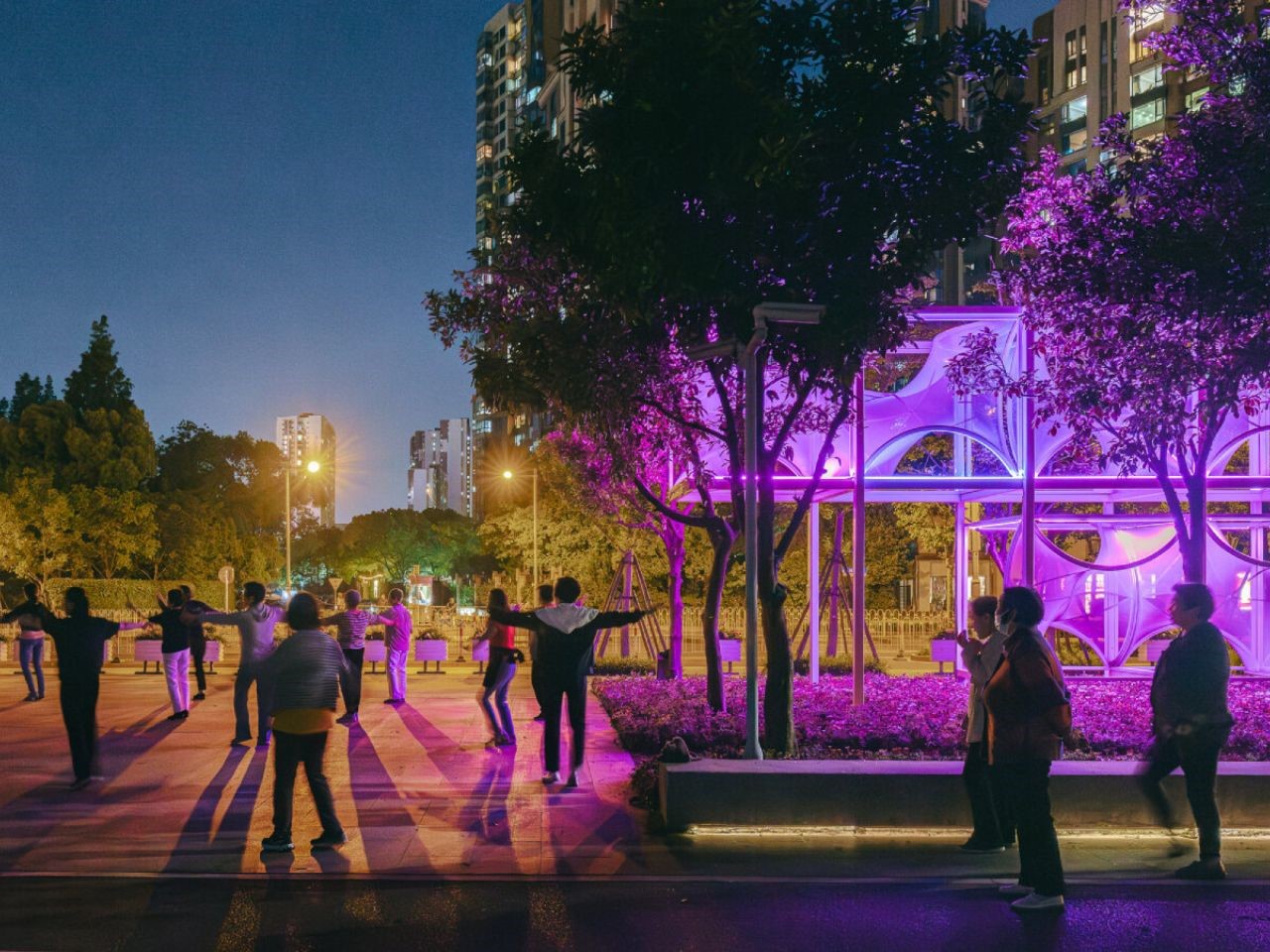
One of Curly Cube’s greatest strengths is its modularity and adaptability. It can be stacked, reconfigured, or even relocated, making it a scalable solution for cities looking to breathe new life into forgotten spaces. Whether serving as seating, partitions, or even trampolines, the installation encourages a tactile and participatory public experience.
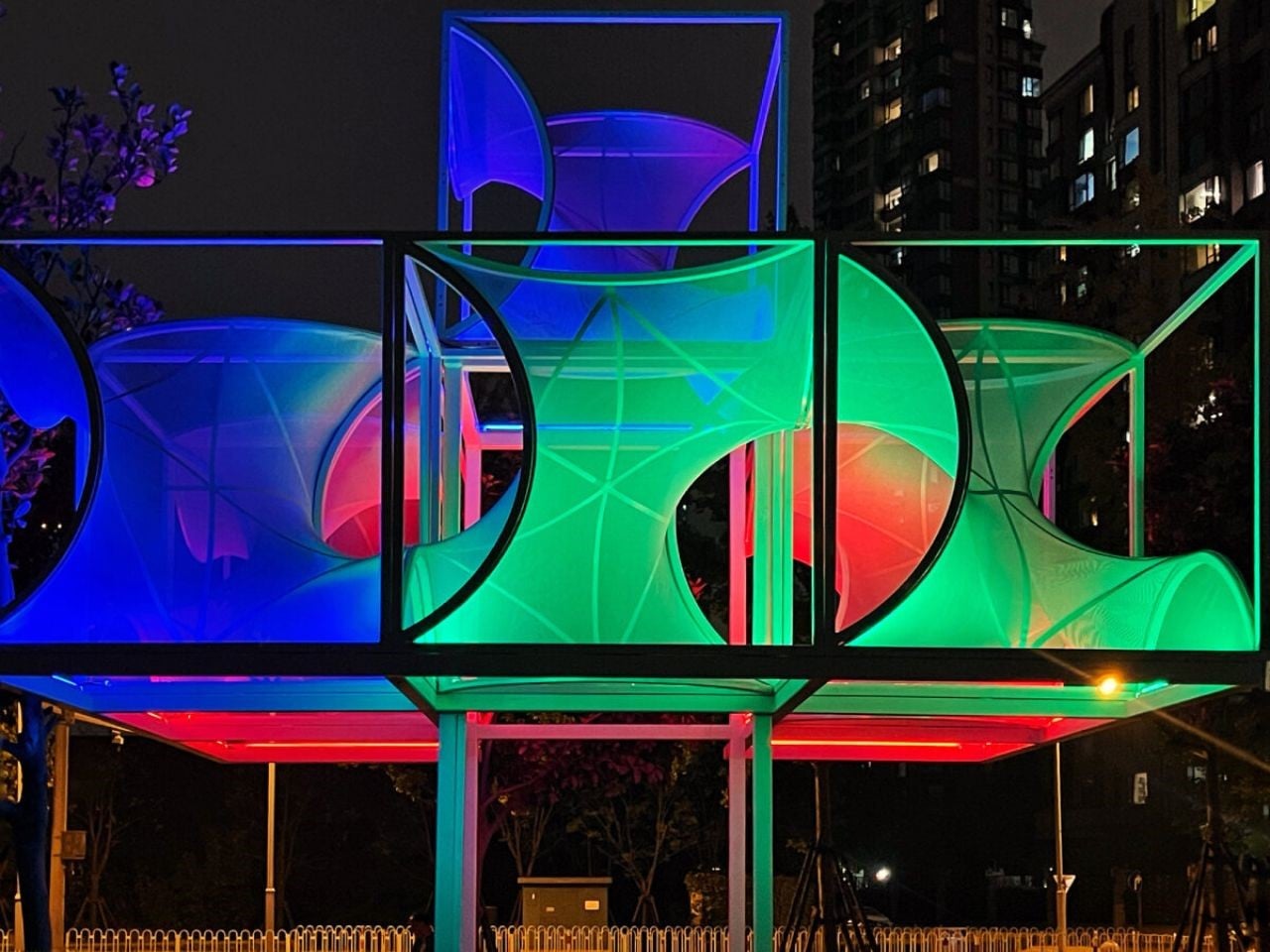
Installations like Curly Cube highlight the role of public design in shaping urban experiences. Cities can often feel fast-paced and impersonal, but a well-placed intervention can transform a simple walkway into a space for connection and curiosity. By integrating adaptable structures into everyday environments, urban spaces can become more inviting, engaging, and memorable.
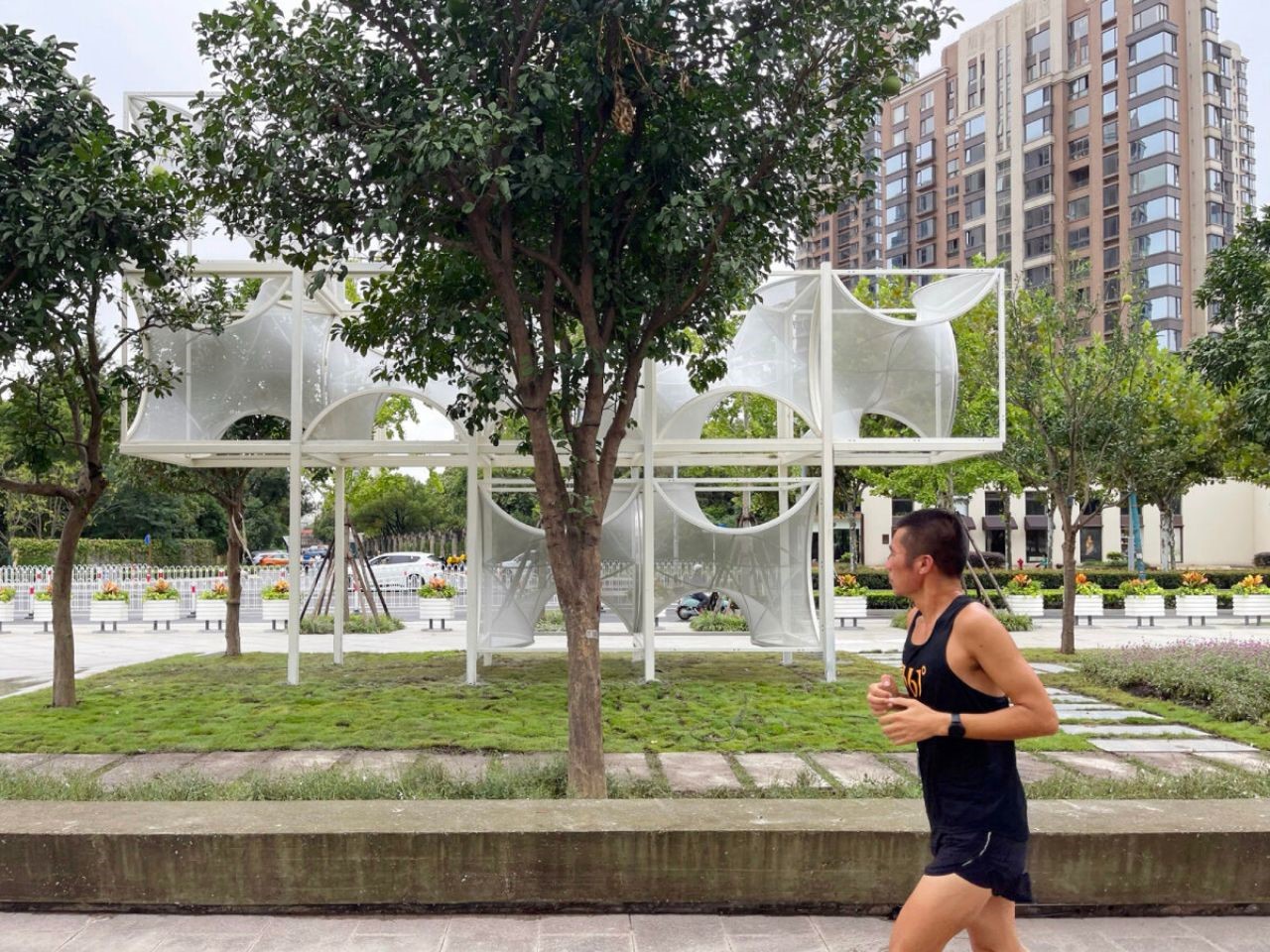
The post Futuristic Modular Installation Redefines Public Spaces and Fosters Community in Shanghai first appeared on Yanko Design.
0 Commentaires